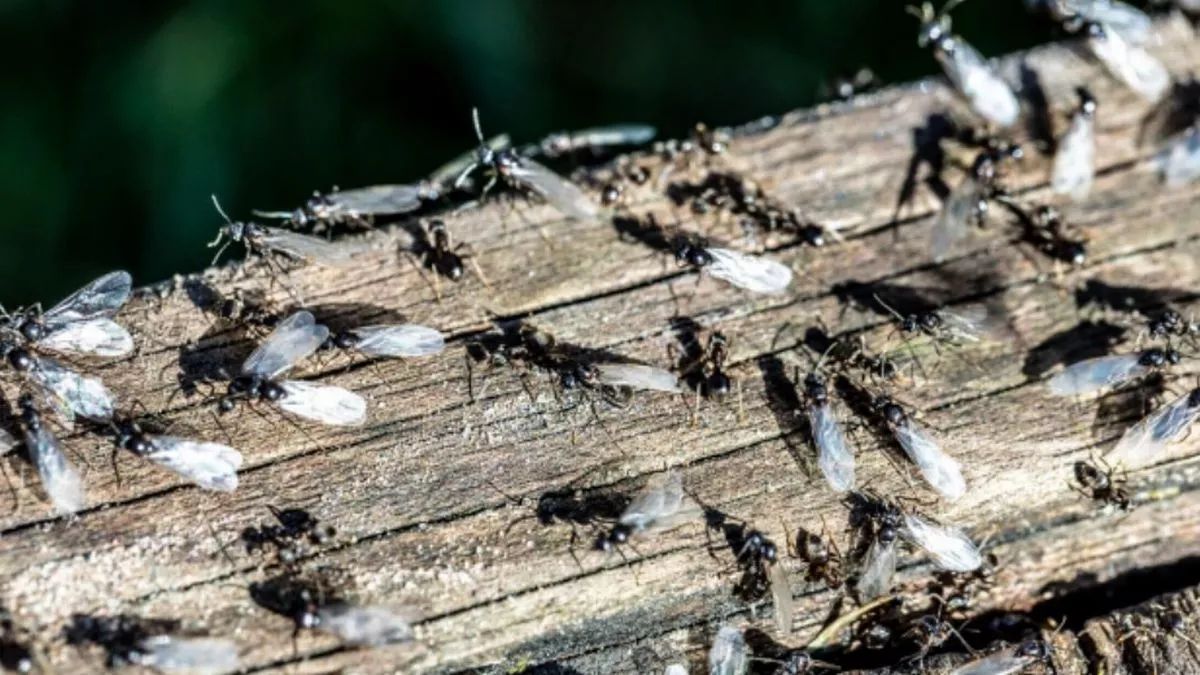Introduction: What Is Flying Ant Day?

Every summer, Britons look to the skies and find them swarming with unexpected visitors: flying ants. This sudden, eerie emergence of ants with wings—commonly referred to as Flying Ant Day—has become a peculiar yet predictable event across the UK. It’s not actually just one day, but rather a phenomenon that occurs over several days, peaking at different times across the country.
So what causes Flying Ant Day? Why do ants suddenly take flight, and what should you do when your garden or patio becomes a launchpad for thousands of winged insects?
Let’s break down everything you need to know about Flying Ant Day 2025.
🐜 What Exactly Is Flying Ant Day?
Flying Ant Day is the time of year when male and queen ants sprout wings and swarm into the air to mate. This natural phenomenon is part of a process called the nuptial flight. After mating in the sky, the males usually die, and the fertilized queens descend to start new colonies underground.
The term “Flying Ant Day” is a bit misleading. Rather than happening on a single day, the emergence spans several weeks, depending on local climate conditions. However, when weather conditions align—typically a warm, humid day following rain—millions of ants may take flight simultaneously across the country, making it feel like a single-day event.
📅 When Is Flying Ant Day in the UK?
In the UK, Flying Ant Day usually happens between late June and mid-August. Historically, it peaks around mid to late July, though exact dates vary with the weather. In 2025, experts anticipate multiple waves throughout July, with potential activity as early as late June.
According to the Royal Society of Biology, their citizen science project “Flying Ant Day Watch” has recorded major peaks around:
-
July 17 (2020)
-
July 12 (2022)
-
July 20 (2023)
Expect a similar pattern in 2025.
🌦️ What Triggers Flying Ant Day?
Several specific conditions must align to trigger a flying ant swarm:
-
Warm temperatures (20°C or higher)
-
High humidity (often after rain)
-
Light or no wind
-
Calm, sunny weather
These conditions allow the ants to fly safely and improve the chance of successful mating.
🧬 Why Do Ants Grow Wings and Fly?
Winged ants are reproductive members of the colony. Here's how it works:
-
Female ants (potential queens) grow wings and leave their nests.
-
Male ants also grow wings and join the mating flight.
-
The ants pair up mid-air, and the females store sperm to fertilize eggs for the rest of their lives.
-
After mating, males die, and females shed their wings and burrow into the ground to start new colonies.
This is an evolutionary tactic to spread genetic diversity and ensure species survival.
🐦 Birds vs. Flying Ants: Seagull Chaos
One odd and fascinating impact of Flying Ant Day? Drunk seagulls.
Seagulls and other birds feast on the flying ants—sometimes so many that the formic acid in the ants' bodies makes birds appear intoxicated or disoriented. People across the UK report seagulls acting erratically, crashing into things or flying strangely during the swarms.
🏡 Should You Be Worried?
Flying ants are harmless to humans. They do not bite, sting, or carry disease, and the phenomenon usually lasts only a few hours or a day in any given area.
Top tips during Flying Ant Day:
-
Close windows and doors if you’re near a swarm.
-
Avoid using insecticides, as the swarm is short-lived and plays a key ecological role.
-
If you see piles of wings, it means mating is done, and new queens have already moved on.
🔬 Scientific Significance
The Royal Society of Biology has run several nationwide studies of Flying Ant Day, using public reports to map swarms across the UK. These studies help scientists understand:
-
Colony health
-
Mating success rates
-
Effects of climate change on insect behavior
Interestingly, some data suggests the phenomenon is starting earlier in recent years due to rising global temperatures.
🌍 Flying Ant Day Around the World
While most associated with the UK, flying ant swarms occur worldwide, including in:
-
United States (especially southern states)
-
India
-
South Africa
-
Australia
Each region has its own timing depending on local climate and ant species.
🐜 Key Facts at a Glance
| Topic | Details |
|---|---|
| Flying Ant Day | Period in summer when ants swarm to mate |
| Typical Dates (UK) | Late June to mid-August |
| Peak Activity | Often around mid-July |
| Weather Triggers | Warm, humid, calm days |
| Harmful to Humans? | No |
| Duration | Just a few hours per area |
| Bird Reaction | Seagulls appear “drunk” after eating too many |
📱 Social Media Buzz
Flying Ant Day trends annually on Twitter/X, Reddit, and Facebook, with people sharing:
-
Videos of swarms darkening skies
-
Photos of ants inside homes
-
Humorous memes about nature’s weirdest “holiday”
Keep an eye out for the hashtag #FlyingAntDay in July!
✅ Final Thoughts
Flying Ant Day is one of nature’s weirdest—and most misunderstood—events. Although annoying to some, it’s a fascinating part of the insect world, with ecological importance and even a touch of humor.
So when the sky starts buzzing in summer 2025, remember: the ants are just looking for love.

You must be logged in to post a comment.